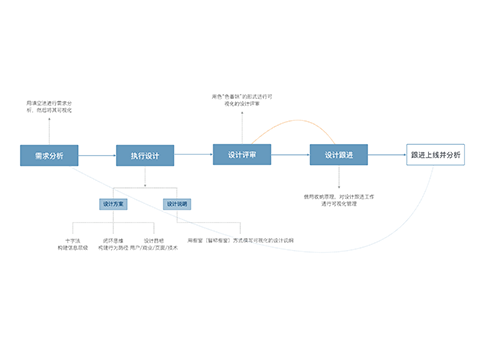-
 Zhang Linlin
NetEase
Senior Interaction Designer
Zhang Linlin
NetEase
Senior Interaction Designer
Exquisite design - extension and practical application of visual design thinking
At present, it is increasingly mentioned that designers must go out and look outward to drive business and vitalize products. This is really important, but we are often easy to overlook the most basic point, that is, designers' hand work. Here, hand work refers not only to the final design scheme, but also from a broader perspective, that is, do the best and the utmost from every contact involved in the design in project cooperation such as the preliminary analysis of requirements, implementation design, design review and design follow-up, and I temporarily call it exquisite design.
This workshop will, with my project experience in the actual work, tell how I use visual thinking to penetrate every link of the project so as to make the work in the design scope exquisite and effective, and to make it a little interesting. Each of us may not be high-end, magnificent and classy, but we can all be small and beautiful!
This workshop will learn:
1. Interpreting visual thinking
2. How to create picture senses with visual thinking: first solve the problem of visualization, and then solve the problem of picture senses.
3. The application of visual thinking and picture senses in the design process
3.1 Preliminary analysis and requirements review of visualization
3.2 Write interactive instructions of visualization
3.3 Conduct design reviews and design follow-up of visualization
4. Share some application cases of visual thinking in life and other aspects
1. Background introduction of the workshop, warmup interaction
2. Content sharing & cases: the application of visual thinking in various aspects of design and life, enumerate the deliverables in the design process and relevant review processes, etc. For method teaching
3. Extension and practice of visual thinking
4. Group presentation and summary
5. "Paper plane" link and QA
1. Designers who are confused about design growth and transformation
2. Designers who want to create their own "exquisite designs"
3. Related students interested in thinking visualization
1. Learn about the ways of using visual thinking in design and life
2. Develop ideas for building our own design thinking systems
3. Eliminate the troubles of transformation and growth and learn some practical methods in the design work
-
 张林林 - 虚实结合唤起画面感
张林林 - 虚实结合唤起画面感
-
 张林林 - 设计流程中使用可视化的环节说明
张林林 - 设计流程中使用可视化的环节说明
-
 张林林 - 沉淀与方法:十字法、填空法
张林林 - 沉淀与方法:十字法、填空法
-
 张林林 - 交互设计:saas行业
张林林 - 交互设计:saas行业
-
 张林林 - 产品视觉设计(分别是:产品详情改改版设计、BP标识使用规范说明、类目可视化标识)
张林林 - 产品视觉设计(分别是:产品详情改改版设计、BP标识使用规范说明、类目可视化标识)
-
 张林林 - 运营视觉类部分设计(从上到下从左到右依次是:买家盛典活动、折扣递减活动、宠物用品活动)
张林林 - 运营视觉类部分设计(从上到下从左到右依次是:买家盛典活动、折扣递减活动、宠物用品活动)














